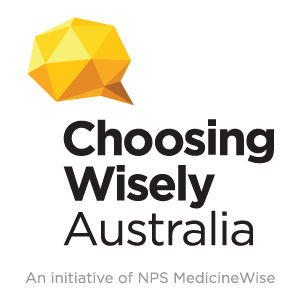Key points
- Patient history and physical examination are as accurate as imaging for diagnosing acute ankle and knee injuries.
- Apply the Ottawa Ankle Rules or Ottawa Knee Rules to rule out fracture.
- Only consider imaging if the results will change your management of the injury.
- Conservative management is based on rest, ice, compression and elevation (RICE) and no heat, alcohol, re-injury or massage (HARM) in the first days after injury.
- If physical examination is limited because of pain and swelling, provide conservative management and re-evaluate 4 days after injury for ankle sprains (lateral ligament) and 1–2 weeks after injury for anterior cruciate ligament (ACL) tears.
- Consider referral to an orthopedic specialist if symptoms persist, despite conservative management.
GP survey results: how did this program change practice?

In October 2016 NPS MedicineWise launched the program Ankle and knee injuries: your imaging choices. As part of our regular evaluation, we surveyed GPs on how their knowledge, awareness and practice in diagnosis and management of acute ankle and knee injuries had changed as a result of taking part in the program.
MedicineWise News: Diagnosing knee pain in middle-aged patients

Knee pain is common in middle-aged patients, and brings them to your surgery often. But is it an acute injury or older damage? In almost all cases a diagnosis can be made without advanced imaging techniques such as MRI.
NPS MedicineWise videos: physical examination of acute ankle and knee injuries

- Meniscal tears
- Anterior cruciate ligament (ACL) tears
- Ankle sprains (lateral ligament)
- Fractures
- Meniscal tears
- Anterior cruciate ligament (ACL) tears
- Ankle sprains (lateral ligament)
- Fractures
CPD options for knee and ankle imaging
Consolidate your knowledge about knee and ankle injuries and imaging, brush up on current guidelines and practices and earn CPD points through our learning activities.
For GPs:
- We are no longer taking bookings for educational visits on this topic
- Online case study: Diagnostic imaging in acute ankle and knee injuries
In my practice: Dr Andrew Rees on diagnosing ankle and knee injuries

Since the early 2000s the number of ankle ultrasounds and knee MRI referrals has been rising in primary care. GPs can turn the tide by improving their knowledge and building confidence in their diagnostic and management skills.
Clinical snapshot: Help remembering the Ottawa Ankle Rules

The Ottawa Ankle Rules (OAR) are a highly sensitive, validated tool for deciding whether to order an X-ray for an acute ankle injury.
The 44-55-66-PM mnemonic might help you remember them.
A single-blind RCT of 206 participants (96 medical students and 94 hospital residents) gave one group the mnemonic and a control group the standard version of the OAR.
At 3 weeks both groups had improved their memory of the OAR, after 5–9 months the mnemonic group had better recall.
The Ottawa Ankle Rules (OAR): 44-55-66-PM
Patients need an X-ray only if:
4 Unable to do 4 steps immediately AND
4 Unable to do 4 steps in the emergency department
or
5 Has pain at the base of the 5th metatarsal
5 Has pain at the 5caphoid (navicular)
or
6 Tenderness in 6 cm posterior edge of lateral malleolus
6 Tenderness in 6 cm posterior edge of medial malleolus
Choosing Wisely Australia

Choosing Wisely Australia helps healthcare providers and consumers have important conversations about improving the quality of healthcare by reducing unnecessary and sometimes harmful tests, treatments, and procedures.
Led by Australia’s colleges, societies and associations and facilitated by NPS MedicineWise, Choosing Wisely Australia challenges the way we think about healthcare, questioning the notion 'more is always better'.
5 questions to ask your doctor or other healthcare provider is a resource that can help patients ensure they end up with the right amount of care.
See the Choosing Wisely recommendations for ankle injuries, and knee injury or conditions
Recommendations from the Royal Australian and New Zealand College of Radiologists
Recommendations from the Australian Physiotherapy Association
Recommendations from Australian College of Nursing
Clinical resources and tools
- Demonstration videos on physical examination tests.
Ottawa Rules
- Ottawa Ankle Rules: These clinical prediction rules guide whether to refer a patient with an acute ankle injury for an X-ray.
- Ottawa Knee Rules: These clinical prediction rules guide whether to refer a patient with an acute knee injury for an X-ray.
Australian guidance
- RACGP Clinical guidance for MRI referral: MRI of the Knee
- RANZCR Educational modules for appropriate imaging referrals; Acute ankle trauma in adults
- RANZCR Imaging Clinical Decision Rules app for iPhone
Diagnostic pathways
MBS Online
For your patients
Discuss acute ankle and knee injuries with your patients using our mediated action plan. The plan has been designed and developed by NPS MedicineWise to support your consultation.
5 Questions to ask your doctor or other healthcare provider

Choosing Wisely Australia helps healthcare providers and consumers have important conversations about improving the quality of healthcare by reducing unnecessary and sometimes harmful tests, treatments, and procedures.
Led by Australia’s colleges, societies and associations and facilitated by NPS MedicineWise, Choosing Wisely Australia challenges the way we think about healthcare, questioning the notion 'more is always better'.
5 questions to ask your doctor or other healthcare provider is a resource that can help patients ensure they end up with the right amount of care.
Essential reading
Knee: general
Meniscal tears
- Ryzewicz M, Peterson B, Siparsky PN, et al. The diagnosis of meniscus tears: the role of MRI and clinical examination. Clin Orthop Relat Res 2007;455:123-33
- Wagemakers HP, Heintjes EM, Boks SS, et al. Diagnostic value of history-taking and physical examination for assessing meniscal tears of the knee in general practice. Clin J Sport Med 2008;18:24-30.
Anterior crucial ligament (ACL) tears
- Swain MS, Henschke N, Kamper SJ, et al. Accuracy of clinical tests in the diagnosis of anterior cruciate ligament injury: a systematic review. Chiropr Man Therap 2014;22:25.
- Wagemakers HP, Luijsterburg PA, Boks SS, et al. Diagnostic accuracy of history taking and physical examination for assessing anterior cruciate ligament lesions of the knee in primary care. Arch Phys Med Rehabil 2010;91:1452-9.
Fractures
- Bachmann LM, Haberzeth S, Steurer J et al. The accuracy of the Ottawa knee rule to rule out knee fractures: a systematic review. Ann Intern Med 2004;140(2):121-4.
- Wallace E, Uijen MJ, Clyne B, et al. Impact analysis studies of clinical prediction rules relevant to primary care: a systematic review. BMJ Open 2016;6:e009957
Ankle sprains (lateral ligament)
- Roosen P, Willems T, De Ridder R. Ankle sprains: diagnosis and therapy. Good Clinical Practice (GCP) Brussels: Belgian Health Care Knowledge Centre (KCE). 2013. KCE Reports 197C
- Polzer H, Kanz KG, Prall WC, et al. Diagnosis and treatment of acute ankle injuries: development of an evidence-based algorithm. Orthop Rev (Pavia) 2012;4:e5
- Van Dijk CN, Mol BWJ, Lim LSL, et al. Diagnosis of ligament rupture of the ankle joint: Physical examination, arthrography, stress radiography and sonography compared in 160 patients after inversion trauma. Acta Orthop Scand 1996;67:566-70
Fractures
- Bachmann LM, Kolb E, Koller MT, et al. Accuracy of Ottawa ankle rules to exclude fractures of the ankle and mid-foot: systematic review. BMJ 2003;326:417
- Wallace E, Uijen MJ, Clyne B, et al. Impact analysis studies of clinical prediction rules relevant to primary care: a systematic review. BMJ Open 2016;6:e009957

